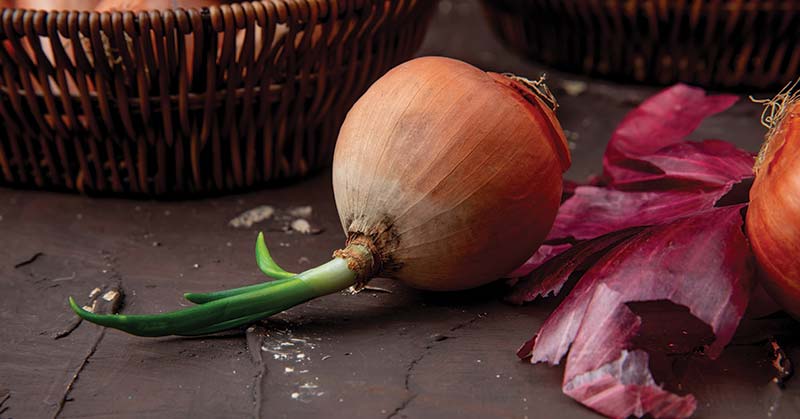Onions are a staple in many kitchens, adding flavor and zest to numerous dishes. Whether you’re a seasoned gardener or a beginner, growing onions from starts is a rewarding and relatively easy process.
In this blog post, we’ll walk you through the steps of planting onion starts, providing tips and tricks to help you grow healthy, robust onions.
Understanding Onion Starts
Before we dive into the planting process, it’s essential to understand what onion starts are. Onion starts are small, immature onion plants that have been grown from seed in a controlled environment.
They are the middle ground between growing onions from seeds and from sets (small, dormant bulbs).
Choosing the Right Variety
Onions come in various types, including short-day, long-day, and day-neutral. Your geographical location will dictate which type to choose:
- Short-day onions thrive in southern latitudes.
- Long-day onions are suitable for northern latitudes.
- Day-neutral onions can grow in most areas.
Select a variety that’s well-suited to your local climate for the best results.
Preparing the Garden Bed
- Location: Choose a location that receives full sun for at least 6-8 hours a day.
- Soil Preparation: Onions prefer well-drained, fertile soil with a pH between 6.0 and 7.5. Amend your soil with compost or well-rotted manure to improve fertility and drainage.
- Spacing: Clear the area of weeds and debris. Onions need space to grow, so plan for rows that are 12-18 inches apart.
Planting Onion Starts
- Timing: Plant onion starts in early spring, as soon as the soil is workable. In warmer climates, you can also plant in the fall.
- Planting Depth: Make shallow furrows about 1 inch deep in your prepared bed.
- Spacing in Rows: Place the onion starts 4-6 inches apart in rows. This spacing gives each plant enough room to grow.
- Covering: Gently cover the starts with soil, ensuring the top of the onion start is just below the soil surface.
- Watering: Water the onion starts thoroughly after planting. Keep the soil consistently moist but not waterlogged.
Caring for Your Onion Plants
- Weeding: Keep the area around your onions free of weeds. Weeds can compete with onions for nutrients and water.
- Fertilizing: Apply a nitrogen-rich fertilizer periodically, especially if your soil is less fertile.
- Watering: Onions require about 1 inch of water per week, including rainfall. In drier conditions, water your onions regularly to maintain even moisture.
Common Challenges
- Pests and Diseases: Keep an eye out for onion pests like thrips and diseases such as onion rot. Implementing crop rotation and practicing good hygiene can minimize these issues.
- Bolting: If onions start to produce a flower stalk, they are bolting. This is often due to temperature fluctuations. To prevent bolting, choose the right variety for your area and ensure consistent watering.
Harvesting Your Onions
Onions are ready to harvest when their tops begin to yellow and fall over, typically in late summer. Gently pull or dig them up and let them cure in a warm, dry, well-ventilated area for several weeks before storing.
Conclusion
Planting onion starts is a simple and satisfying process that can yield a bountiful harvest. By choosing the right variety, preparing your soil, and providing consistent care, you can enjoy homegrown onions for months to come.
Remember, the key to successful onion growing is understanding your local climate, providing ample sunlight, and maintaining proper soil conditions.
FAQs on How do I Plant Onion Starts
Q: What is the best time of year to plant onion starts?
A: The ideal time to plant onion starts is in early spring, as soon as the soil is workable. In warmer climates, you can also plant them in the fall.
Q: How do I choose the right onion variety for my area?
A: Choose a variety based on your geographical location: short-day onions for southern latitudes, long-day onions for northern latitudes, and day-neutral onions for most areas.
Q: What kind of soil is best for planting onion starts?
A: Onions thrive in well-drained, fertile soil with a pH between 6.0 and 7.5. Amend your soil with compost or well-rotted manure to improve fertility and drainage.
Q: How deep should I plant onion starts?
A: Plant onion starts in shallow furrows about 1 inch deep, ensuring the top of the onion start is just below the soil surface.
Q: What is the recommended spacing for onion starts in the garden?
A: Space onion starts 4-6 inches apart in rows, with rows spaced 12-18 inches apart. This gives each plant enough room to grow.
Q: How much and how often should I water my onion starts?
A: Water the onion starts thoroughly after planting and keep the soil consistently moist but not waterlogged. Onions generally require about 1 inch of water per week, including rainfall.
Q: Do I need to fertilize my onion plants?
A: Yes, apply a nitrogen-rich fertilizer periodically, especially if your soil is less fertile, to promote healthy growth.
Q: How do I protect my onion starts from pests and diseases?
A: Monitor for pests like thrips and diseases such as onion rot. Practice crop rotation and good garden hygiene to minimize these issues.
Q: When are onions ready to harvest?
A: Onions are ready to harvest when their tops begin to yellow and fall over. This usually occurs in late summer.
Q: How should I store my harvested onions?
A: After harvesting, cure your onions in a warm, dry, well-ventilated area for several weeks. Once cured, store them in a cool, dry place with good air circulation.




